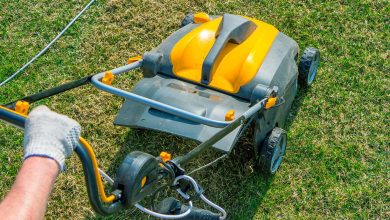Potato Pests and Diseases: [Detection, Causes and Solutions]
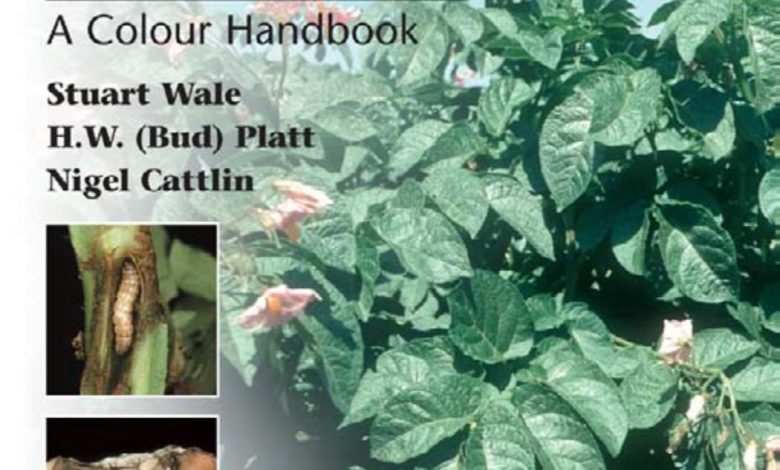
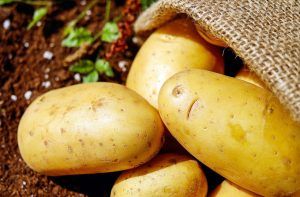 The potato harvest fills us with happiness because of how abundant and delicious this crop is.
The potato harvest fills us with happiness because of how abundant and delicious this crop is.
Its biggest problem is that direct contact with the soil makes the plantation quite susceptible to pests and diseases .
The good thing is that fighting any attack is not so complex if you know the characteristics of each type and the correct treatment.And that’s the information we present below, so it’s time to take notes.
Mildew
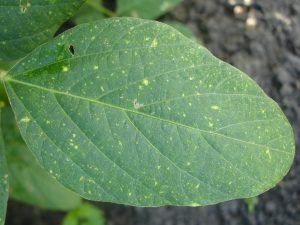 It is a disease that is caused by a fungus. Its action in the case of potatoes is oriented to the aerial part of the plant.
It is a disease that is caused by a fungus. Its action in the case of potatoes is oriented to the aerial part of the plant.
The leaves are first spotted and then go on to form wrinkles on the surface. Later, a white powder will coat the leaf.
This condition spreads towards the stems until reaching the potatoes themselves, in which rottenness is generated on the surface.
The reasons that lead to mildew attacks have to do with excessive humidity, such as rain that lasts more than 8 hours.Currently there are species of potatoes that have been worked on to make them more resistant after planting and it is precisely those that should be used.
However, when it is believed that there are risks of the disease occurring, the support of a fungicide will be the best course of action .
would alternate
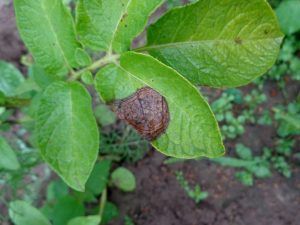 Its action occurs in all parts of the plant, denoting in most cases a lower incidence on the potato itself.
Its action occurs in all parts of the plant, denoting in most cases a lower incidence on the potato itself.
The first symptoms appear on the oldest leaves, which are noticeable with a spot-like ring that gradually darkens.
Later, when it attacks the tubers, these can be denoted by dark-colored lesions that appear sunken but with protruding edges.
To avoid its appearance, it is necessary to maintain optimal cultivation conditions, with regular rotation, correct irrigation, nutritional values and zero injuries.If the environmental conditions are favorable for the appearance of the disease, the use of fungicides is approved.
Potato caterpillar
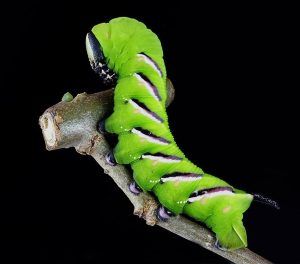 Being a plant that is very close to the ground, it is common for it to suffer attacks from creeping-type pests such as the caterpillar.
Being a plant that is very close to the ground, it is common for it to suffer attacks from creeping-type pests such as the caterpillar.
The physical structure of this plague is green with a series of white lines throughout its body that look like rings.
Its main area of attack is the leaves, feeding on these and generating a good number of holes that prevent good photosynthesis.
In some cases, they may attack the roots, thus causing the plant to die.In the face of its attack, there will be no other solution than to apply a commercially available insecticide or, if there are not many, scare away with a vegetable extract based on garlic.
rhizoctonia
It is a disease that occurs due to the attack of a fungus, being common in potato crops. Its development occurs on land that ranges from neutral to acidic and has a low average temperature.
The action of fungi operates mainly on the potatoes themselves, causing different types of damage to them:
- Formation of masses on the surface of the shells, whose content is the mycelium of the fungus itself.
- Decreased production and that can also be accompanied by tubers that remain very close to the surface.
- Malformations in the tubers , born on the surface and with colors ranging from red to green.
- Death of underground shoots .
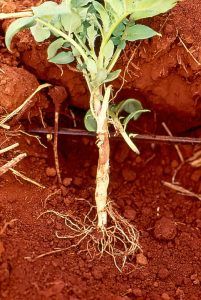 As it attacks tubers directly, it is sometimes difficult to detect, so attention must be paid to the growth of the entire crop.
As it attacks tubers directly, it is sometimes difficult to detect, so attention must be paid to the growth of the entire crop.
If you notice that some plants are larger than others, it could be a rhizoctonia attack.
Superficial sowing in very cold terrain will be a preventive measure to avoid the attack of the fungus , as well as crop rotations.
Fungicide application is also well supported when the risks of its occurrence are high.
potato beetle
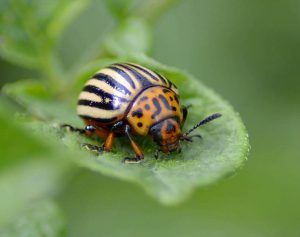 It is one of the most aggressive pests that exist in potato crops because its larvae consume the leaves quite quickly .
It is one of the most aggressive pests that exist in potato crops because its larvae consume the leaves quite quickly .
They are located on the back of the leaves and this mechanism of action advances until the total defoliation of the plants is achieved.
Therefore, they do not carry out the photosynthesis process necessary to prosper and the tubers are affected.
Although it is known as the potato beetle, as it is its main target, it can also affect tomato, eggplant and pepper crops.Among the actions that can be taken to prevent its appearance is the association with other repellent crops, such as carrots.
Keeping the area clear of weeds is another very useful strategy to prevent this type of attack.In case of corrective actions, there are certain extracts that will help, such as castor or horseradish.
common scabies
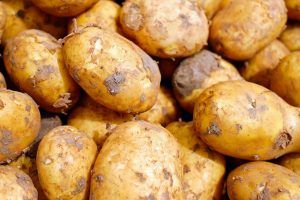 It is a difficult disease to detect because its effects occur directly on the tubers, so it will be noticed when harvesting.
It is a difficult disease to detect because its effects occur directly on the tubers, so it will be noticed when harvesting.
The action occurs due to the presence of a bacterium that triggers two possible types of damage.
The first of them is associated with small brown spots that get bigger as the days go by.Some time later, they become padded in structure and it is possible that they affect the interior of the potato.
The second form is with rough damage to the structure of the potato that is capable of covering it all, causing the total loss of the crop.As in most of the cases presented here, a high level preventive measure is to carry out crop rotation.
In this case, it will also be necessary to avoid certain types of fertilization, such as the use of manure.Due to the attack characteristics of the disease, corrective measures are quite difficult to apply.
With this knowledge, there are very high chances of enjoying a potato crop in optimal conditions.

![Photo of Myrtle: [Properties, Growth, Fruit, Types and Care]](https://www.complete-gardening.com/wp-content/uploads/2022/08/myrtle-properties-growth-fruit-types-and-care-390x220.png)
![Photo of Kiwi Cuttings: [Grafts, Time, Rooting and Planting]](https://www.complete-gardening.com/wp-content/uploads/2022/08/kiwi-cuttings-grafts-time-rooting-and-planting-390x220.jpg)

